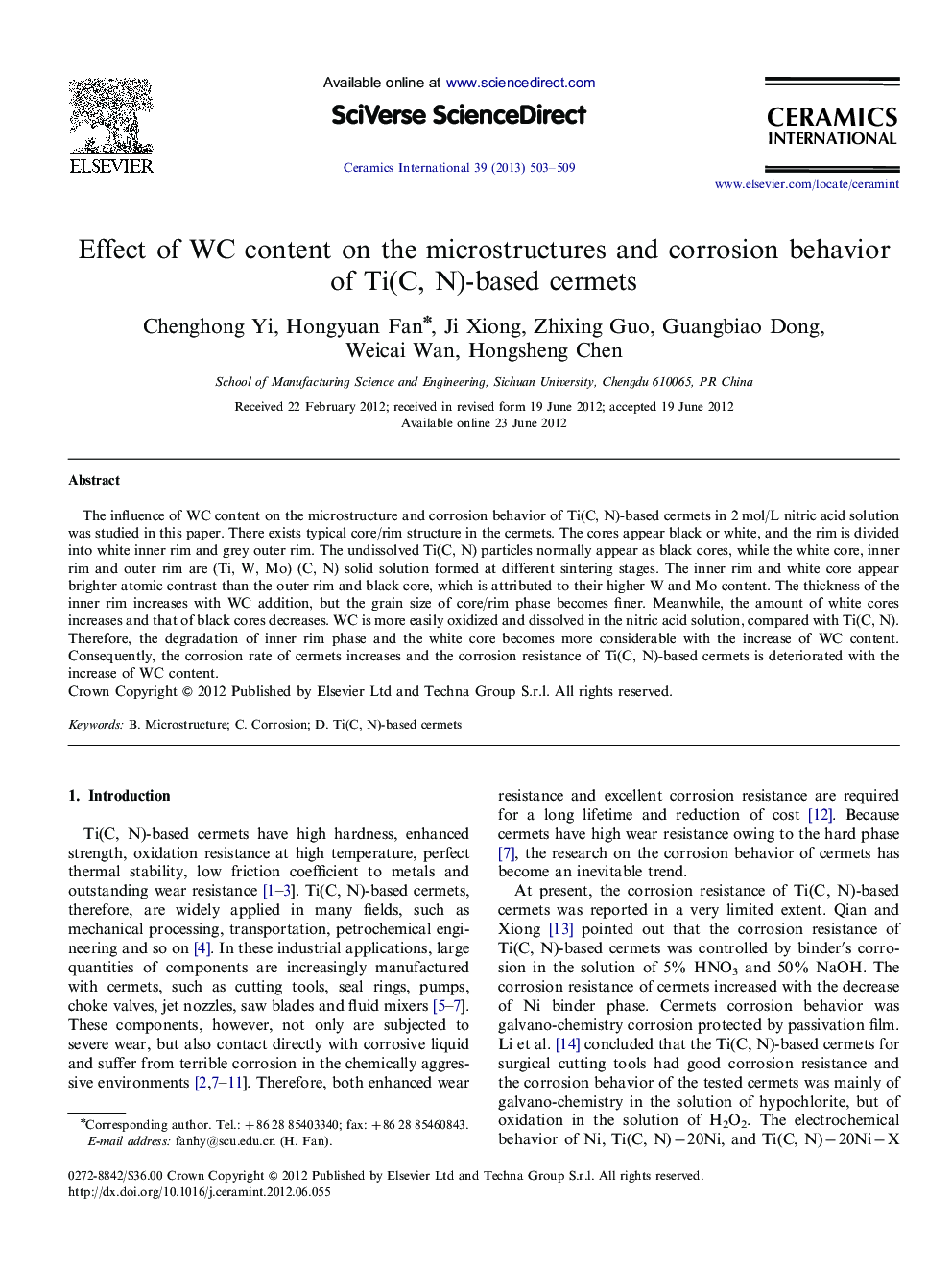| Article ID | Journal | Published Year | Pages | File Type |
|---|---|---|---|---|
| 1463491 | Ceramics International | 2013 | 7 Pages |
The influence of WC content on the microstructure and corrosion behavior of Ti(C, N)-based cermets in 2 mol/L nitric acid solution was studied in this paper. There exists typical core/rim structure in the cermets. The cores appear black or white, and the rim is divided into white inner rim and grey outer rim. The undissolved Ti(C, N) particles normally appear as black cores, while the white core, inner rim and outer rim are (Ti, W, Mo) (C, N) solid solution formed at different sintering stages. The inner rim and white core appear brighter atomic contrast than the outer rim and black core, which is attributed to their higher W and Mo content. The thickness of the inner rim increases with WC addition, but the grain size of core/rim phase becomes finer. Meanwhile, the amount of white cores increases and that of black cores decreases. WC is more easily oxidized and dissolved in the nitric acid solution, compared with Ti(C, N). Therefore, the degradation of inner rim phase and the white core becomes more considerable with the increase of WC content. Consequently, the corrosion rate of cermets increases and the corrosion resistance of Ti(C, N)-based cermets is deteriorated with the increase of WC content.
